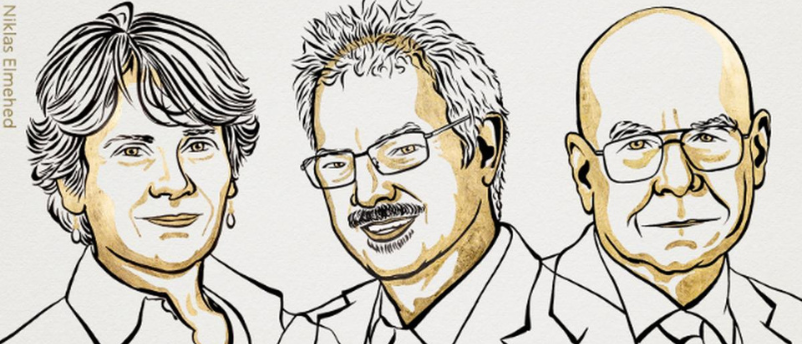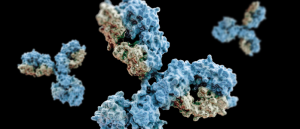
BioTechniques News
Beatrice Bowlby

‘Click chemistry’ wins the Nobel Prize in Chemistry for its ability to simply and reliably synthesize complex molecules and its application in living cells utilizing bioorthogonal reactions.
Carolyn Bertozzi from Stanford University (CA, USA), Morten Meldal from the University of Copenhagen (Denmark) and Barry Sharpless from Scripps Research (CA, USA) have been awarded the Nobel Prize in Chemistry for their development of ‘click chemistry’ and bioorthogonal chemistry. Sharpless now joins Marie Curie in a small group of scientists to have won two Nobel Prizes.
Nature makes hugely complex and intricate molecules, which are challenging, expensive and time-consuming to synthesize in labs. These reactions often involve many steps, each producing more byproducts, which can become especially challenging when manufacturing complex molecules on a large scale. Click chemistry overcomes these limitations with its minimalist approach to synthesizing molecules from key building blocks.
“This year’s Prize in Chemistry deals with not overcomplicating matters, instead working with what is easy and simple. Functional molecules can be built even by taking a straightforward route,” commented Johan Åqvist, the Chair of the Nobel Committee for Chemistry.
 Who won the 2022 Nobel Prize in Medicine?
Who won the 2022 Nobel Prize in Medicine?
Svante Pääbo has been awarded the 2022 Nobel Prize in Medicine for his pioneering work in the sequencing and analysis of extinct hominin DNA and his contributions to our understanding of human evolution.
In 2001, Sharpless and his research group proposed the idea of click chemistry, a reaction where molecular building blocks ‘snap’ together in quick and irreversible reactions to produce a high yield while avoiding byproducts. Sharpless was convinced that this method could generate pharmaceutical compounds on an industrial scale due to the variety of products possible using different combinations of simple molecules. Sharpless outlined some tough criteria for a reaction to be considered a click reaction, including operating under simple reaction conditions, requiring no solvent or a solvent that is benign or easily removed, starting reagents that are readily available and products that are stable under physiological conditions.
In 2002, Meldal and Sharpless independently arrived at what is considered the ‘ideal’ click chemistry reaction: the copper-catalyzed azide–alkyne cycloaddition. This reaction easily links molecules together by reacting one molecule containing an azide functional group and another with an alkyne group in the presence of a copper catalyst. This is now commonly used and has been utilized for mapping DNA, developing pharmaceuticals and creating novel materials; however, this reaction cannot be used in living cells due to the toxicity of copper.
 Cancer treatment may hinge on harnessing antibody conformation
Cancer treatment may hinge on harnessing antibody conformation
Researchers have determined the mechanism underlying antibody hinge conformational changes, which could contribute to the development of more effective cancer treatments.
Sharpless and Meldal opened the door to click chemistry, but Bertozzi took it to the next level and brought click chemistry to living cells using bioorthogonal chemistry – a term Bertozzi coined, which literally means ‘not interacting with biology’.
In 2004, Bertozzi found a way of applying click chemistry to living cells by developing a reaction between an azide and a strained cyclooctyne that does not need to be catalyzed, called the strain-promoted alkyne–azide cycloaddition. This removes the need for the copper catalyst, so it can be utilized in living cells without interfering with natural biochemical processes.
Bertozzi had previously been studying molecules on the cell surface called glycans, but tools in molecular biology were not suitable for studying them. Bertozzi used her bioorthogonal click reaction to label glycans with fluorescent tags without affecting their biochemistry. In doing so, she found that glycan molecules on cancer cells help to protect tumors from the immune system. Using this observation, Bertozzi and her research group developed a novel antibody that guides enzymes to break down glycans, so the immune system can locate and target tumor cells. This antibody is currently in clinical trials.
“I am absolutely stunned. I’m sitting here and can hardly breathe,” commented Bertozzi, who is now the eighth woman to receive a Nobel Prize in Chemistry, upon hearing the award announcement. “I’m still not entirely positive it’s real but it’s getting realer by the minute.”
The post Who won the 2022 Nobel Prize in Chemistry? appeared first on BioTechniques.
Full BioTechniques Article here
Powered by WPeMatico
